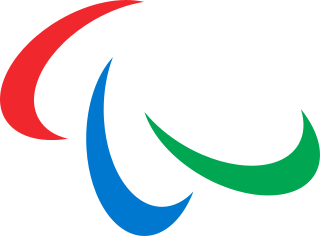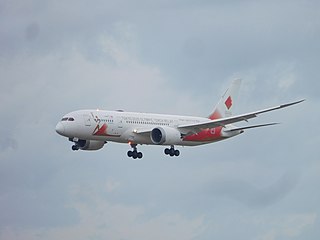The Olympic flame is a symbol used in the Olympic movement. It is also a symbol of continuity between ancient and modern games. The Olympic flame is lit at Olympia, Greece, several months before the Olympic Games. This ceremony starts the Olympic torch relay, which formally ends with the lighting of the Olympic cauldron during the opening ceremony of the Olympic Games. Through 2022, the flame would continue to burn in the cauldron for the duration of the Games, until it was extinguished during the Olympic closing ceremony. In 2024, electric lighting and mist were used to create a simulated flame for the Olympic cauldron, with the actual flame kept in a lantern exhibited at an adjacent location. That lantern was then taken by French swimmer Léon Marchand from Jardins des Tuileries and ceremonially "transferred" to the Stade de France at the start of the Closing Ceremony: there it was finally extinguished just after the IOC president declared officially closed the Games.

The 2008 Summer Olympics (2008年夏季奥运会), officially the Games of the XXIX Olympiad (第二十九届夏季奥林匹克运动会) and officially branded as Beijing 2008 (北京2008), were an international multisport event held from 8 to 24 August 2008, in Beijing, China. A total of 10,942 athletes from 204 National Olympic Committees (NOCs) competed in 28 sports and 302 events, one event more than those scheduled for the 2004 Summer Olympics. This was the first time China had hosted the Olympic Games, and the third time the Summer Olympic Games had been held in East Asia, following the 1964 Olympics in Tokyo, Japan, and the 1988 Olympics in Seoul, South Korea. These were also the second Summer Olympic Games to be held in a communist state, the first being the 1980 Summer Olympics in the Soviet Union.

The 2008 Summer Paralympic Games, the 13th Summer Paralympic Games, took place in Beijing, China from September 6 to 17, 2008. As with the 2008 Summer Olympics, equestrian events were held in Hong Kong and sailing events in Qingdao. It was first time the new Paralympic logo featured in the Summer Paralympics since its rebranding after the 2004 Summer Paralympics.

The Paralympic symbols are the icons, flags, and symbols used by the International Paralympic Committee to promote the Paralympic Games.
The torch relay for the 2008 Summer Paralympic Games was held between August 28 and September 6 in eleven cities, and also included the tomb of Yellow Emperor.

The 2008 Summer Paralympics opening ceremony was held at the Beijing National Stadium on September 6, 2008 just two weeks after the end of the 2008 Summer Olympics. The event was themed "One World, One Dream" and "Transcendence, Integration, Equality." The show was attended by about 91,000 to 100,000 spectators. It was approximately 3-hours in length and consisted of 6,000 performers and 4,000 disabled athletes from 148 countries.
Hou Bin, born in Jiamusi, Heilongjiang Province, in 1975, is a Chinese Paralympic track and field high jumper. In 2008, he was named as a Paralympian Ambassador.

The opening ceremony of the 2008 Summer Olympics was held at the Beijing National Stadium, also known as the Bird's Nest. It began at 20:00 China Standard Time (UTC+08:00), on 8 August 2008, due to the significance of the number 8, which is considered to be auspicious and is furthermore associated with prosperity and confidence in Chinese culture. The artistic part of the ceremony comprised two parts titled "Brilliant Civilization" and "Glorious Era" respectively. The first part highlighted Chinese civilization and the second part exhibited modern China and its dream of harmony between the people of the world. The stadium was full to its 91,000 capacity according to organizers.

The 11th National Games of China were held in various cities in Shandong from October 16 to October 28, 2009. Represented were 33 sports, 43 disciplines and 362 events, including 4 winter sports which were held in Shenyang, Changchun and Qingdao between January and April 2009.

The 2010 Asian Para Games, also known as the First Asian Para Games, was a parallel sport event for Asian athletes with a disability held in Guangzhou, China. Two weeks after the conclusion of the 16th Asian Games, It opened on December 12 and closed on December 19, 2010.

The National Stadium (国家体育场), a.k.a. the Bird's Nest (鸟巢), is a stadium at Olympic Green in Chaoyang, Beijing, China. The National Stadium, covering an area of 204,000 square meters with 91,000 capacity, broke ground in December 2003, officially started construction in March 2004, and was completed in June 2008.

The 2012 Summer Paralympics torch relay ran from 22 to 29 August 2012, prior to the 2012 Summer Paralympics. The relay began with four flames kindled on the highest peaks of the four nations of the United Kingdom, which were then brought to their respective capital cities for special events honouring the upcoming Games. For the relay proper, the four national flames were united at a ceremony in Stoke Mandeville in preparation for a final 92-mile (148-kilometre) journey to London.

The 2022 Winter Paralympics, commonly known as Beijing 2022, were an international winter multi-sport parasports event held in Beijing, China from 4 to 13 March 2022. This was the 13th Winter Paralympic Games, as administered by the International Paralympic Committee (IPC).

The 2000 Summer Olympics torch relay was the transferral of the Olympic Flame to Sydney, Australia, that built up to the 2000 Summer Olympics. The torch tavelled to various island nations as part of a tour of Oceania before beginning an extensive journey around Australia. For the first time the Flame was taken underwater, with a special flare-like torch taken on a dive down to the Great Barrier Reef. At the opening ceremony the cauldron was lit by Aboriginal athlete Cathy Freeman.

The 2012 Summer Olympics and Paralympics cauldron was used for the Olympic flame during the Summer Olympics and Paralympics of London 2012. The cauldron was designed by Thomas Heatherwick and described as "one of the best-kept secrets of the opening ceremony": until it was lit during the Olympics ceremony, neither its design and location, nor who would light it, had been revealed. For the Olympics it consisted of 204 individual 'petals', and for the Paralympics 164, one for each competing nation.

The 2020 Summer Olympics torch relay was held from 12 March 2020 and ended on 23 July 2021. After being lit in Olympia, Greece, the torch was handed over to the Olympic shooting Gold medallist Anna Korakaki, who became the relay originating Olympian woman of the 2020 Summer Olympics torch relay. It was then transported to Athens on 19 March by official airliner Japan Airlines. The Japanese leg began in Fukushima, and ended in Tokyo's New National Stadium, the main venue of the 2020 Olympics. It makes a tour of Japanese cities, including all 47 prefecture capitals. The torch was scheduled to visit two remote island groups which are part of Tokyo. The end of the relay was the finale of the 2020 Summer Olympics opening ceremony on 23 July 2021. Toyota, NTT, ENEOS, Nippon Life, JAL, ANA and Japan Post Holdings are the presenting partners of the relay, with the slogan being "Hope Lights Our Way".
The 2022 Winter Olympics closing ceremony was held at the Beijing National Stadium in Beijing on 20 February 2022. As mandated by the Olympic Charter, the proceedings are expected to combine the formal ceremonial closing of this international sporting event with an artistic spectacle to showcase the culture and history of the current and next host nation (Italy) for the 2026 Winter Olympics in Milan and Cortina d'Ampezzo.

The 2022 Winter Olympics torch relay was run from 18 October 2021 until 4 February 2022. After it was lit in Olympia, Greece, the torch traveled to Athens in a car. and was handed to Beijing on 20 October. The Chinese leg ended in Beijing National Stadium, at the end of the opening ceremony. On 20 October 2021, it was announced that the Chinese leg had only three days, following a series of displays of the flame in cities around Beijing.The physical relay started on 2 February, at the morning of the first day of the Chinese New Year as stage 3. Unlike the previous relays, the relay only visited the three venues clusters, the main sights of Beijing and the city of Zhangjiakou. The final torch was lit by long-distance runner Dilnigar Ilhamjan and nordic combined Zhao Jiawen.

The 2022 Winter Olympics opening ceremony was held at Beijing National Stadium, China on 4 February 2022. As mandated by the Olympic Charter, the proceedings combined the formal and ceremonial opening of this international sporting event, including welcoming speeches, hoisting of the flags and the parade of athletes, with an artistic spectacle to showcase the host nation's winter culture and modern history. The Games were officially opened by Xi Jinping, general secretary of the Chinese Communist Party and president of the People's Republic of China.
The opening ceremony of the 2022 Winter Paralympics took place on 4 March 2022 at the Beijing National Stadium in Beijing, China. The Games were opened by Xi Jinping, General Secretary of the Chinese Communist Party and President of China.



















